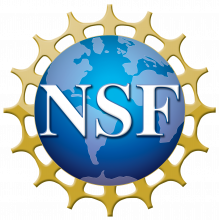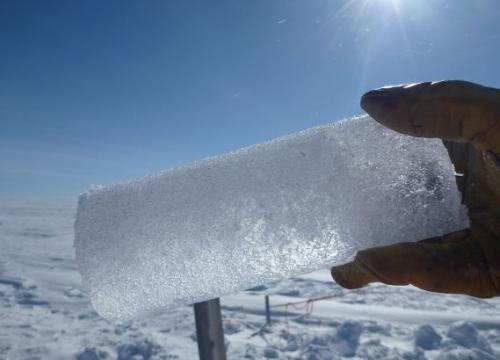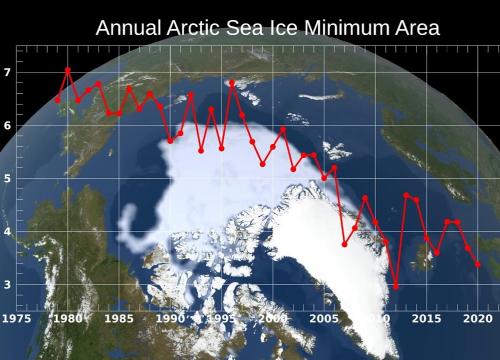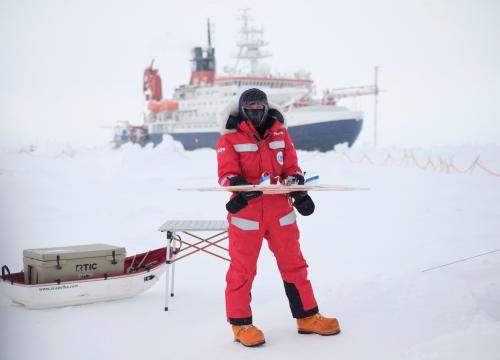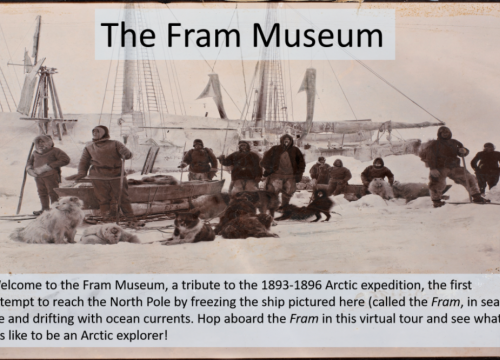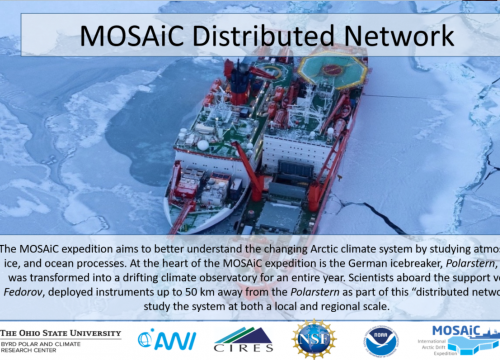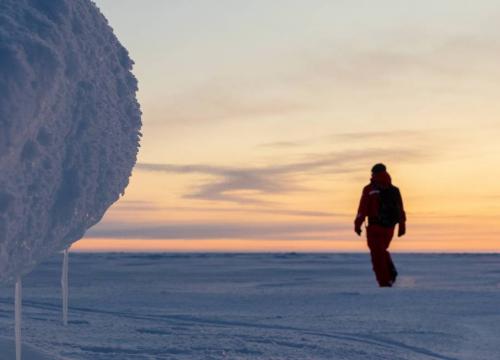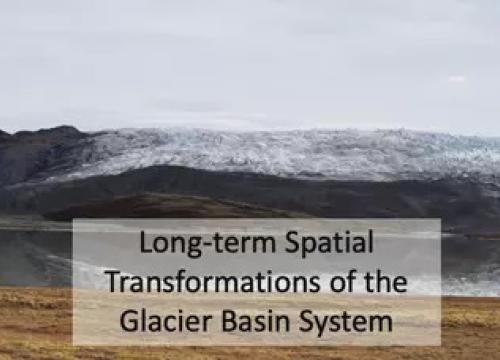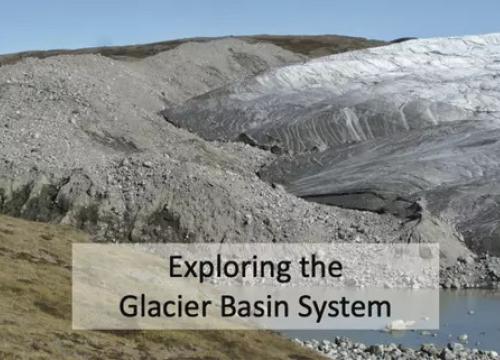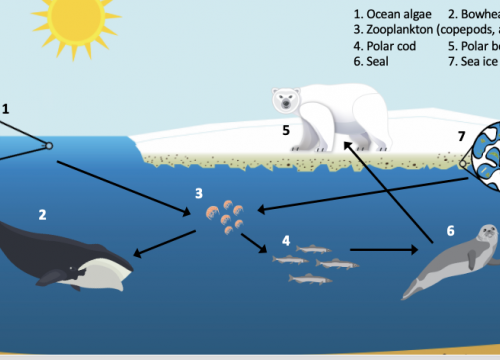In this MS/HS unit, students engage with 360° virtual reality tours, authentic Arctic datasets, and app-based labs to construct models and explanations for the unit driving question, "Why might the Arctic be warming twice as fast as the rest of the world?"
- Find the Unit Summary here
- Find the Unit Storyline here
- Find the Instructional Calendar here
Teacher Workshops
We do not have any upcoming workshops. For more information about the curriculum, please contact developer Jonathan Griffith via email at jonathan.griffith@colorado.edu
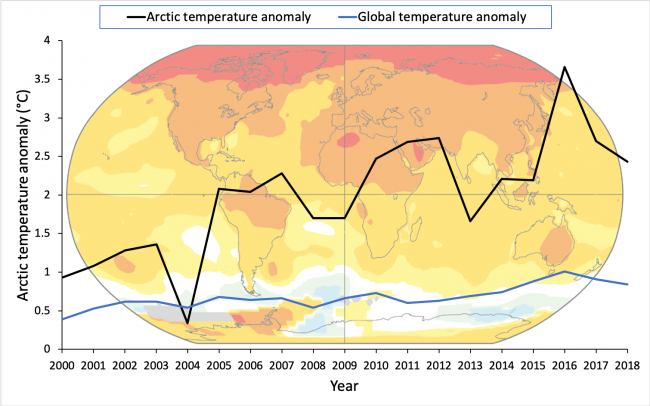
Temperature anomalies calculated with respect to 1951-1980 based period. Data source: NOAA
Goals Header
Big Ideas
- Earth’s climate system is dynamic and interconnected
- Changes in one part of Earth’s climate system can cause unexpected changes in another
- Not all warming is equal
Teaching Materials
Description
Lesson 1: Eliciting Ideas About A Phenomenon
In this lesson, students work in pairs to construct initial descriptive models and explanations for the unit driving question, “Why might the Arctic be warming twice as fast as the rest of the world?”
- Driving Question(s):
- Why should we care about the Arctic?
- Learning Goal(s):
- Define and describe the geography of the Arctic
- Elicit student ideas why the Arctic might be warming twice as fast as the rest of the world.
- Standards:
- ESS2.A: Earth Materials and Systems & ESS2.D: Weather and Climate
Lesson 2: Earth’s Energy Budget
In this lesson, students will identify and describe properties of the electromagnetic spectrum in the context of Earth’s energy budget.
- Driving Question(s):
- How does Earth maintain the perfect balance of incoming and outgoing energy?
- Learning Goal(s):
- Identify and describe properties energy in the electromagnetic spectrum
- Create a model that represents Earth’s energy budget
- Standards:
- ESS2.D: Weather and Climate
Lesson 3: Greenhouse Effect
In this lesson, students explore the relationship between shortwave/longwave energy and atmospheric gases through a PhET simulation and predict how changes in greenhouse gas concentrations will affect global temperatures.
- Driving Question(s):
- What characteristics define a greenhouse gas?
- What is the greenhouse effect?
- Learning Goal(s):
- Identify and describe the relationship between shortwave/longwave energy and atmospheric gases
- Describe the greenhouse effect using the following vocabulary terms: shortwave energy, longwave energy, greenhouse gases
- Standards:
- ESS2.D: Weather and Climate
Lesson 4: Arctic Fieldwork
In this lesson, students visit MOSAiC field sites through a virtual reality tour and interact with actual shortwave and longwave energy datasets from the Arctic to understand how the Arctic energy budget has changed over time.
- Driving Question(s):
- What scientific instruments are MOSAiC scientists using to study the changing Arctic climate system?
- How has the amount of incoming shortwave energy and outgoing longwave energy changed over time?
- Learning Goal(s):
- Identify patterns in shortwave and longwave energy over time.
- Develop scientific questions related to shortwave and longwave energy datasets.
- Standards:
- ESS2.D: Weather and Climate
Lesson 5: Model Revision
In this lesson, students draw on concepts and evidence acquired during the unit to revise their initial models, constructing a new model for the phenomenon, “Why is the Arctic warming twice as fast as the rest of the world?”
- Driving Question(s):
- Why do scientists continue to gather evidence and revise models of phenomenon?
- Learning Goal(s):
- Reflect on learning by applying evidence gathered from previous lessons to revise initial models/explanations.
- Standards:
- ESS2.D: Weather and Climate
Lesson 6: Measuring Albedo
In this lesson, students will use the “Albedo: A Reflectance App” to measure the reflectance (albedo) of different surfaces and come up with a rule to describe the relationship between the color of a surface and its albedo.
- Driving Question(s):
- What is the relationship between the color of a surface and its albedo?
- What happens to energy that is not reflected by a surface?
- How could a decline in sea ice affect the Arctic’s albedo and temperature?
- Learning Goal(s):
- Describe the relationship between the color and albedo
- Describe the relationship between albedo and temperature
- Standards:
- ESS2.A: Earth Materials and Systems
Lesson 7 - Ice-Albedo Feedback
In this lesson, students analyze maps to calculate and compare changes in the Arctic’s albedo.
- Driving Question(s):
- What is a feedback loop?
- How does a decline in sea ice lead to further melting of sea ice?
- Learning Goal(s):
- Describe the ice-albedo feedback loop
- Standards:
- ESS2.A: Earth Materials and Systems
Lesson 8: Model Testing
In this lesson, students will test their models by matching their ideas against real-world data (e.g., temperature, albedo, sea ice extent) about the phenomenon, Arctic amplification.
- Driving Question(s):
- Can we use real-world data to confirm or refute our model/understanding of the unit driving question?
- Learning Goal(s):
- Identify and explain patterns in data
- Standards:
- ESS2.A: Earth Materials and Systems & ESS2.D: Weather and Climate
Lesson 9: Building Consensus - Final Model Construction
In this lesson, students draw on concepts and evidence acquired during the unit to construct final models for the unit driving question, “Why might the Arctic be warming twice as fast as the rest of the world?”
- Driving Question(s):
- Why do scientists continue to gather evidence and revise models of phenomena?
- Learning Goal(s):
- Construct a final model that explains why the Arctic is warming twice as fast as the rest of the world
- Standards:
- ESS2.A: Earth Materials and Systems & ESS2.D: Weather and Climate
Lesson 10: Final Explanation
In this lesson, students work independently to write their final evidence-based explanations for the unit driving question,“Why might the Arctic be warming twice as fast as the rest of the world?
- Driving Question(s):
- Why might the Arctic be warming twice as fast as the rest of the world?
- Learning Goal(s):
- Construct a written explanation for the unit driving question, why is the Arctic warming twice as fast as the rest of the world?
- Standards:
- ESS2.A: Earth Materials and Systems & ESS2.D: Weather and Climate
